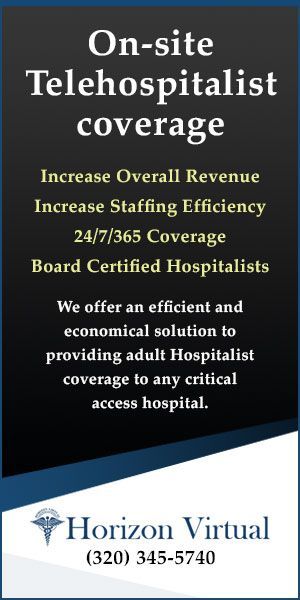Capsules
AMA Releases CPT 2025 Code Set
The American Medical Association (AMA) has recently released its 2025 updates to the Current Procedural Terminology (CPT®) codes. CPT codes are the nation’s uniform data-sharing code set for medical procedures and services. “The CPT code set is the foundation for the efficient and effective exchange of standardized information in a data-driven health system, facilitating the reporting, measuring, analyzing, researching and benchmarking of medical services and procedures with the goal of delivering better patient care, improved outcomes and lower costs,” said AMA President Bruce A, Scott, MD. “The latest updates to the CPT code set reflect advancements in contemporary clinical practice and ensures the code set fulfills its vital role as the trusted universal language of medicine.” There are 420 overall updates in the CPT 2025 code set, including 270 new codes, 112 deletions, and 38 revisions. The CPT code set continues to expand in new areas of medicine with proprietary laboratory analyses assigned to the largest proportion of new codes (37%), mostly for novel genetic testing. Category III CPT codes for emerging medical services accounted for about a third of new codes (30%).
Updates to the CPT code set are considered through an open editorial process managed by the CPT Editorial Panel, an independent body convened by the AMA that collects broad input from the health care community and beyond to ensure CPT content reflects the demands of a modern health care system.
Key updates in the CPT 2025 code set include:
Digital Medicine Remote therapeutic monitoring (RTM) services were revised.
Augmented/Artificial Intelligence (AI) AI Taxonomy introduced in 2023 has been implemented in category III CPT codes to classify AI medical services and procedures as assistive, augmentative or autonomous based on the work performed by the AI application on behalf of the physician or other qualified health care professional (QHP).
General Surgery Updates were made to CPT’s general surgery section to reflect novel approaches in skin grafts for wound care and recovery. Coding books and products are available from the AMA Storefront on Amazon, including the CPT 2025 Professional Edition codebook.
HealthPartners Opens New Apple Valley Facility
HealthPartners recently announced that its new 57,000 square-foot Apple Valley Clinic is now open to patients. Construction on the $29 million building project began last summer, and it doubles the size of the original clinic, built in 1982, that it is replacing. Located at 15350 English Ave, just three blocks from the original location, the new facility offers many expanded services to meet the needs of the growing community and includes nearly 400 parking spaces. “The south metro is growing rapidly and the demand for quality care and services is rising as the population increases,” says Leslie Dockan, vice president of primary care, value-based care and laboratories at HealthPartners. “The expansion of our facility allows us to meet the needs of the communities that we have proudly served for more than 40 years. The new site is home to additional services and departments, including MRI, mammography, allergy and ophthalmology. It also adds increased capacity to care for more patients through existing services including family medicine, pediatrics, radiology, cardiology, lab, urgent care, OB-GYN and dental. “Having additional access to quality care close to home is beneficial for the families we serve. We’re proud of the added services and convenience we can provide to patients in and around the city of Apple Valley,” says Dockan. Other features of the new, two-story clinic include standardized exam rooms, expanded waiting areas, a dedicated pediatric waiting area, safety and security enhancements and several other improvements. Mohagen Hansen Architecture Interiors provided design services and worked in partnership with IMEG, who provided civil and structural engineering services. Construction services were provided by Gardner builders. The new facility is the third addition in the south metro as part of HealthPartners and Park Nicollet’s efforts to better serve the primary and specialty care needs of the community, joining the new clinic in Lakeville and a specialty center in Burnsville..
Blue Cross and Herself Health Agree to Value-Based Contract
Blue Cross and Blue Shield of Minnesota (Blue Cross) and Herself Health recently announced a new structure to their network contract. Terms of the new agreement, which apply retroactively to January 1, 2024, shift payment incentives from a traditional fee-for-service model to a value-based approach that prioritizes and rewards patient outcomes over volume of services rendered. This collaboration emphasizes results-driven health solutions and is uniquely structured to address the specific needs of Herself Health’s growing patient base and the diverse membership of Blue Cross, focusing on Medicare Advantage members. By concentrating on preventive care and effective management of conditions, value-based care agreements not only lead to healthier outcomes but also form a foundation for reducing unnecessary medical expenses, making health care more affordable for patients. “With Blue Cross’ significant presence and member loyalty in the Minnesota Medicare Advantage market and its focus on increasing value-based care offerings, this collaboration will enhance access to comprehensive care for women over age 65,” said Kristen Helton, CEO of Herself Health. “Our service reflects a deep understanding of the specific health care challenges faced by senior women and represents a meaningful departure from the one-size-fits-all health care model. Together with Blue Cross, we will continue our mission to offer senior women best in class health care lovingly designed just for them.” Herself Health is committed to improving the lives of senior women by integrating physical and behavioral health into care programs, and thoroughly assessing each patient’s health and wellness profile. This approach addresses critical areas like mental health, dementia, heart disease, arthritis and osteoporosis, which disproportionately affect women. “Our collaboration with Herself Health really speaks to a new kind of thinking. We are jointly accelerating the pace of change needed to forge a more inclusive health care future for all communities, especially those traditionally overlooked. This contract enhancement underscores our shared pledge to empower and improve health outcomes for women ages 65 and older,” said Monica Engel, senior vice president of government markets at Blue Cross.
VA Breaks Ground on New Minnesota Women’s Clinic
The VA health care system recently announced it had broken ground at its Minneapolis campus for construction of a new 13,334 -square-foot, nearly $15 million women’s health clinic. “This event affirms VA’s commitment to improve access to health care for our veterans and in this case, women veterans. The Women’s Clinic will be specifically constructed to provide women veterans access to the high-quality health, accessible care services they have earned and deserve,” said Minneapolis VA Health Care System director Pat Kelly. The clinic, which is expected to be complete in early 2026, will offer a wide range of health care services designed specifically for women veterans, including primary care, whole health, mental health services, reproductive health and specialized care for conditions related to military service. “We understand the needs of female veterans are diverse, and we are prepared to meet those needs with tailored health care plans and holistic support systems,” said Alisa Duran, MD, the women’s health director at the Minneapolis VA. “We want our female veterans to know they are not alone,” she said. “They are part of a network that values and supports them. We will offer programs that encourage camaraderie and mutual support, recognizing the strength that comes from shared experiences and collective resilience.” The new space will allow for all women’s health care to be centrally located in one spot with its own exterior entrance and parking lot. Sen. Amy Klobuchar, who spoke at the groundbreaking event, said, “Women veterans are the fastest growing group of veterans across the United States, and for years, I think back, over a decade ago, they would tell me they’d go to a clinic and whether they needed a Pap smear or a mammogram, it was a huge problem. There wasn’t a waiting line when they signed up to serve, and there shouldn’t be a waiting line when they need health care in the United States of America.” The Minneapolis VA Health Care System provides over 100,000 veterans with a full range of health services at 15 locations. Facilities include the Minneapolis VA Medical Center, 13 statewide community-based outpatient clinics and the community resource and referral center for veterans experiencing homelessness in Minneapolis.
Allina Service Line Cuts Continue
Allina Health recently announced that effective November 2, 2024, hours for part of its medical-surgical staff at Owatonna Hospital will be reduced. The health system attributed the move to cutting its elective surgery schedule from five to four days a week, and the Minnesota Nurses Association was quick to respond. They stated the move, which results in cuts in hours for the registered nurse care coordinator staff, represents layoffs caused by the Mayo Clinic. An Allina spokesperson said, “This change is driven by a substantial decrease in surgical volumes following the departure of Mayo Clinic Health System (MCHS) Owatonna physicians. We are working with impacted employees to help them understand how this change will affect their schedules and, as appropriate, offer them support with finding other job opportunities within Allina Health.” The MNA union responded they are “particularly concerned by the role the Mayo Clinic is playing in this decision and the impact it will have on the Owatonna community. Mayo has stopped referring patients to Allina and refers them instead to the Mayo Rochester campus. This has resulted in a dramatic decrease in work for our nurses. Once again, corporate health care executives at Mayo who have no connection to the community are making decisions that negatively affect nurses and patients.” Jason Wray-Raabolle, MD, lead physician of MCHS in Faribault and Owatonna, responded, “Allina Health owns and operates the Owatonna Hospital and oversees all nurse staffing-related decisions. The hospital nurses in Owatonna are employed by Allina. MCHS values its partnership with Allina but is not involved in these types of personnel decisions. In some instances, referrals to Mayo Clinic in Rochester may be necessary to provide specialized care or access to resources that aren’t available locally. We strive to collaborate with Allina Health in Owatonna to keep patients close to home whenever possible.” The move is another step in an ongoing policy stalemate whereby patients and communities are casualties. Mayo has lobbied strongly against any legislation requiring committees with nurse representatives to be involved in decision-making regarding staffing levels, and Allina’s tax filings showed a loss of $28 million in 2023.
Hazelden Betty Ford Launches Novel Opioid Addiction Treatment Research
Hazeleden Betty Ford recently announced a new partnership with Battelle and Spark Biomedical, both in the product development industry, to create an AI-powered wearable device to improve opioid addiction treatment. The joint effort will explore the development of an artificial intelligence (AI) algorithm designed to proactively detect and manage opioid withdrawal symptoms. The research is funded in part by a grant from the National Institute on Drug Abuse. Patients participating in the trial will use two wearable devices equipped with advanced sensors that measure digital (heart rate, accelerometer, skin temperature, etc.) and physical biomarkers. Patients will also complete gold-standard clinical assessments for opioid withdrawal and cravings. Battelle’s team will compile the physiological sensor and clinical assessment data into an automated algorithm. The next step will apply the algorithm to initiate closed-loop neurostimulation using Spark Biomedical’s FDA-cleared Transcutaneous Auricular Neurostimulation (tAN®) device, Sparrow Ascent. Leveraging the algorithm and closing the loop allows for treatment to be triggered at a precise moment, eliminating withdrawal symptoms or cravings even before they are noticeable to the patient. This proactive approach to treating opioid withdrawal symptoms and cravings is designed to make treatment more effective and efficient, empowering patients to more easily comply with their treatment plans and reducing the likelihood of returning to use and overdose. Navid Khodaparast, PhD, study principal investigator, cofounder and chief science officer at Spark, noted, “By leveraging the AI expertise of Battelle and substance use disorder treatment expertise of Hazelden Betty Ford, we are strongly positioned to advance our understanding of opioid withdrawal and cravings management. For years, the gold standard for assessing OUD symptoms has been ‘paper & pencil’ assessments. Unfortunately, these methods are limited due to subjectivity and lack of physiological markers. A transformative solution encompassing AI early detection paired with wearable neurostimulation treatment could significantly enhance patient treatment retention rates for improved patient outcomes. It’s a big step forward in the fight to end the opioid epidemic.”
Mayo Opens New Hospital in La Crosse
The Mayo Clinic recently announced the completion of its new hospital in La Crosse, Wisconsin. The new $215 million, six-level, 96-bed facility replaces the current hospital. The new facility includes: cardiac care, radiology and imaging, medical-surgical units, an intensive care unit, a new family birth center and special care nursery, a surgical and procedural floor and a rooftop helipad. Gianrico Farrugia, MD, president and CEO at Mayo called the facility “a significant milestone for Mayo Clinic Health System and the La Crosse community.”
MORE STORIES IN THIS ISSUE































